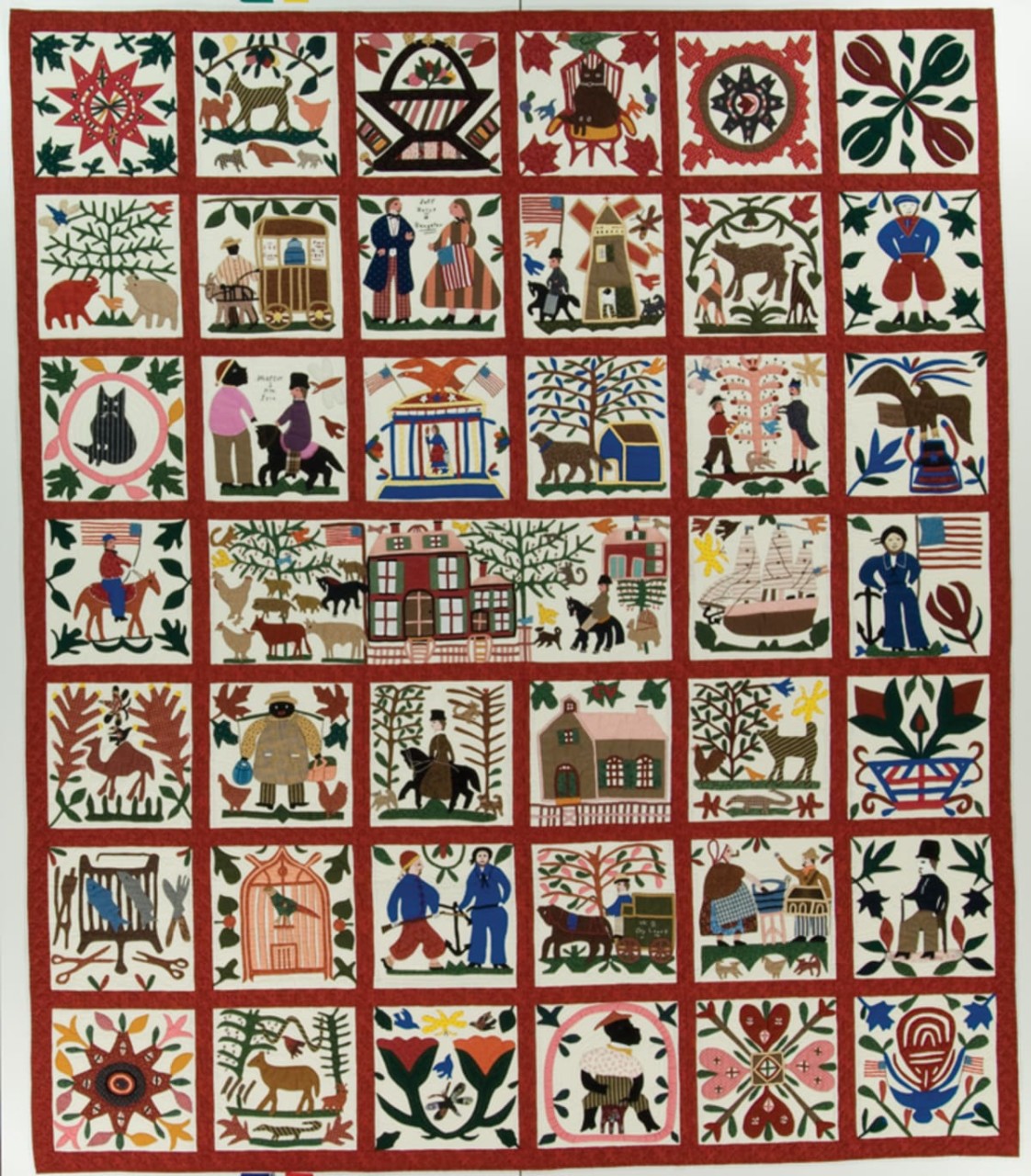
Some the items I’m writing about are simply good reminders on the researching journey. You may already be aware and can simply look at the glorious quilts. But in case you aren’t familiar with one or two of these ideas, I want to cover them. Original source documents are something frequently cited, but what all does it include? Everything from diaries, to receipts, invoices, and more. One good way to find these documents is to research by career (shippers have bills of lading, merchants have stock invoices, etc.) or by family name at libraries and historical societies. If you’re lucky the family will have at least one person who was a saver.

An interesting additional original source in our industry is other reproduction quilters’ notes. Someone who left notes that went before you researching a quilter, quilt, or a technique used. A prime example is Hortence Beck, an amazing quilter from our hometown of Topeka, KS. She created notebooks about the quilts she was recreating. The International Quilt Museum in Nebraska has her notebooks, but look for other places such as the Michigan State University Museum, or the AQSG study quilt books.

And don’t forget the obvious, newspapers, public records, wills, census records and business directories. Some town’s business directories date back to 1600s and are a great source for everyday life businesses. Here’s an example at this link. Newspapers have become more accessible online, but some of the earlier versions still have to be looked at on microfiche. Here are a couple of places to check out. Finally court records are a perfect source to see what a family treasured and passed onto the next generation in probate records or sued to get/retain custody.
